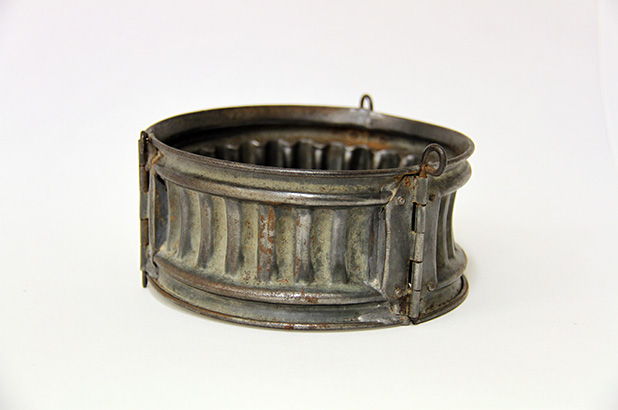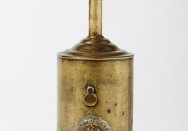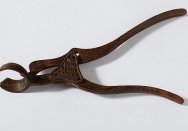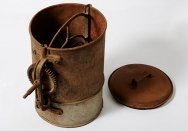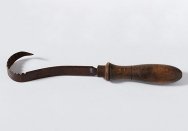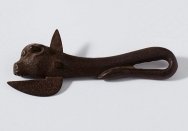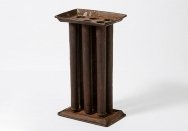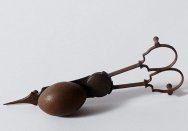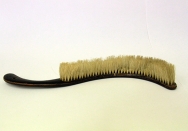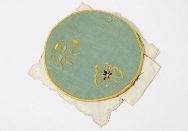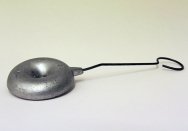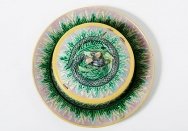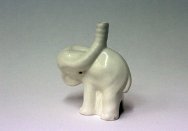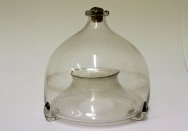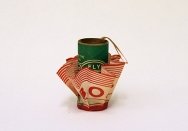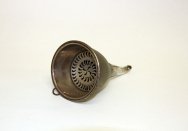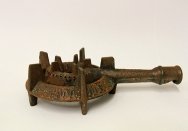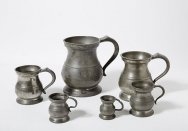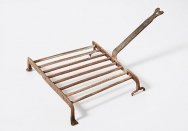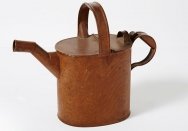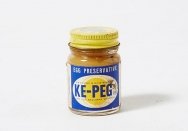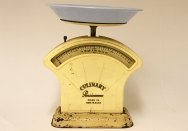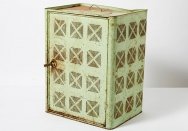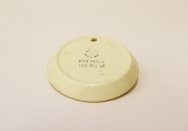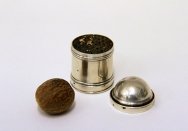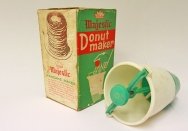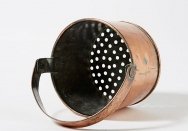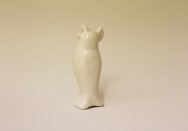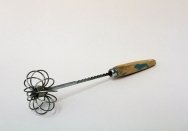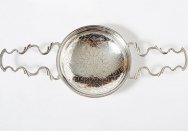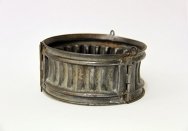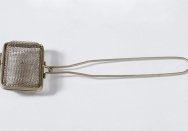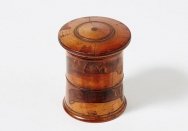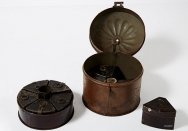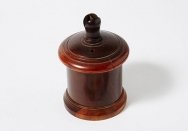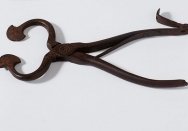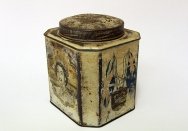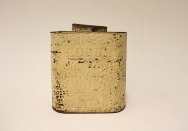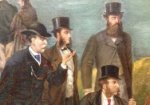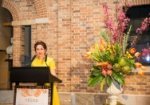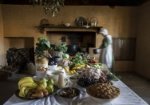For visitors to our Eat Your History: A Shared Table exhibition the first port of call was the Curio Wall – with object as diverse as punch sieves, raised pie molds and a 1950s donut maker.
In the gallery below are all the objects that were on display – can you guess what each is, and how it was used? Some are obvious, some are fiendish. Tap on each to see if you’ve guessed right and let us know how you went.
A second sitting at ‘A Shared Table’
This is the first stage in putting the complete exhibition content online. Over the coming months we’ll be loading the text from the panels, the various images, and re-tagging older posts that related to the exhibition’s content and themes. A dedicated category icon on the left of the page – the copper jelly mould – will also take you to all the content. It’s a virtual ‘magic pudding’ that you can dip into as many times as you like. Enjoy!
- Meat was suspended from a bottle jack in front of an open flame and roasted. Photo © Stuart Miller for Sydney Living Museums
- Bottle opener by Lund, mid 19th century, R74/70. Photo © Stuart Miller for Sydney Living Museums
- Butter churn – a contraption to churn the cream to make butter, R73/74-1:3. Photo © Stuart Miller for Sydney Living Museums
- Butter curler, 19th century, V82/52. Photo © Stuart Miller for Sydney Living Museums
- Can opener, VP135. Photo © Stuart Miller for Sydney Living Museums
- Candle mould – melted candle off-cuts or fat would be poured into the mould to make low-quality candles, 19th century, V88/494. Photo © Stuart Miller for Sydney Living Museums
- Candle wick cutters – for cutting candle wicks to prevent burning wicks from overhanging and melting the sides of the candle, VP121. Photo © Stuart Miller for Sydney Living Museums
- Crumb brush – for brushing crumbs from the table, private collection. Photo Alysha Buss © Sydney Living Museums
- Doily press and doilies – a flat storage system for tea-tray doilies by Kate Thorburn, c1930. Sydney Living Museums M86/524-1:11
- Individual donut mould, private collection. Photo Alysha Buss © Sydney Living Museums
- Eel serving dish – for serving rolled (collared) eel by George Jones, 1861–1872, R89/46-1:2. Photo © Stuart Miller for Sydney Living Museums
- Pie bird – inserted into pies prior to baking to let steam out and prevent soggy pastry by Nutbrown Ltd, 1930–40, collection Anna Cossu. Photo Alysha Buss © Sydney Living Museums
- Fly catcher – sugary water was placed in the glass reservoir to attract and trap flies and insects, 1910–1930, SP98/14. Photo Alysha Buss © Sydney Living Museums
- Fly ribbon, a sticky paper ribbon used to attract and trap flies and insects. Photo Alysha Buss © Sydney Living Museums
- Funnel – used to decant wine from a cask, 1800-1820, EB2002/21. Photo © Alysha Buss for Sydney Living Museums
- Gas ring – a fuel efficient alternative to heating the whole stove to heat a single pot. Photo Alysha Buss © Sydney Living Museums
- Gill measures – measuring cups by C J Mason & Co, 19th century, V88/153-1:5. Photo © Stuart Miller for Sydney Living Museums
- Gridiron – for braising meat over a flame, 19th century, V81/36. Photo © Stuart Miller for Sydney Living Museums
- Hot water can – for transporting hot water in an age before piped water, c1860, V83/77. Photo © Stuart Miller for Sydney Living Museums
- Ke-peg – an oily product applied to the shell of fresh eggs to preserve them by Grocery Distributors Pty Ltd, c1930s, M86/1397. Photo © Stuart Miller for Sydney Living Museums
- Kitchen scales by Culinary Persinware, private collection. Photo Alysha Buss © Sydney Living Museums
- Meat safe – for storing meat safe from insects, vermins and greedy fingers, c1900–1930, R73/132-1. Photo © Stuart Miller for Sydney Living Museums
- Milk boiler alert – placed in a saucepan of milk, the alert gently starts to rattle as the milk heats up, alerting that the milk is almost boiled by Wembley Ware, c1940s, private collection. Photo Alysha Buss © Sydney Living Museums
- Personal nutmeg grater by Samuel Pemberton, private collection. Photo Alysha Buss © Sydney Living Museums
- Pancake and donut maker by Majestic, late 1950s, private collection. Photo Alysha Buss © Sydney Living Museums
- Perforated saucepan – used for steaming food, late 19th century. Photo © Stuart Miller for Sydney Living Museums
- Pie bird – inserted into pies prior to baking to let steam out and prevent soggy pastry, c1930–40, collection Anna Cossu. Photo Alysha Buss © Sydney Living Museums
- Pump whisk, collection Anna Cossu. Photo Alysha Buss © Sydney Living Museums
- Punch strainer – for straining citrus juice into a punch mix by Edward Allridge, Silversmith, c1800. Punch was a signature drink of the Regency period and was traditionally made from five ingredients: sugar, water, rum, brandy and citrus juice, EB97/23. Photo © Stuart Miller for Sydney Living Museums
- Raised pie mould – a mould for creating the distinctive convex sides of a raised pie, c1900, private collection. Photo Alysha Buss © Sydney Living Museums
- Soap saver – before liquid detergent, odds and ends of soap were saved in the wire mesh basket and sloshed through water, 20th century, R72/88. Photo © Stuart Miller for Sydney Living Museums
- Spice box, early 19th century, V83/68-1:2. Photo © Stuart Miller for Sydney Living Museums
- Spice box, R72/27-1:12. Photo © Stuart Miller for Sydney Living Museums
- String container – string was used extensively in colonial kitchens from tying cloth jar covers to rolled joints of meat, c1860, V83/67-1:4. Photo © Stuart Miller for Sydney Living Museums
- Sugar cutter – for cutting nips of sugar from a sugar cone, early 19th century, V82/56. Photo © Stuart Miller for Sydney Living Museums
- Tea tin, Bushells, c1953, private collection. Photo Alysha Buss © Sydney Living Museums
- Tea tin by The Robur Tea Co, 1910–1920, private collection. Photo Alysha Buss © Sydney Living Museums
